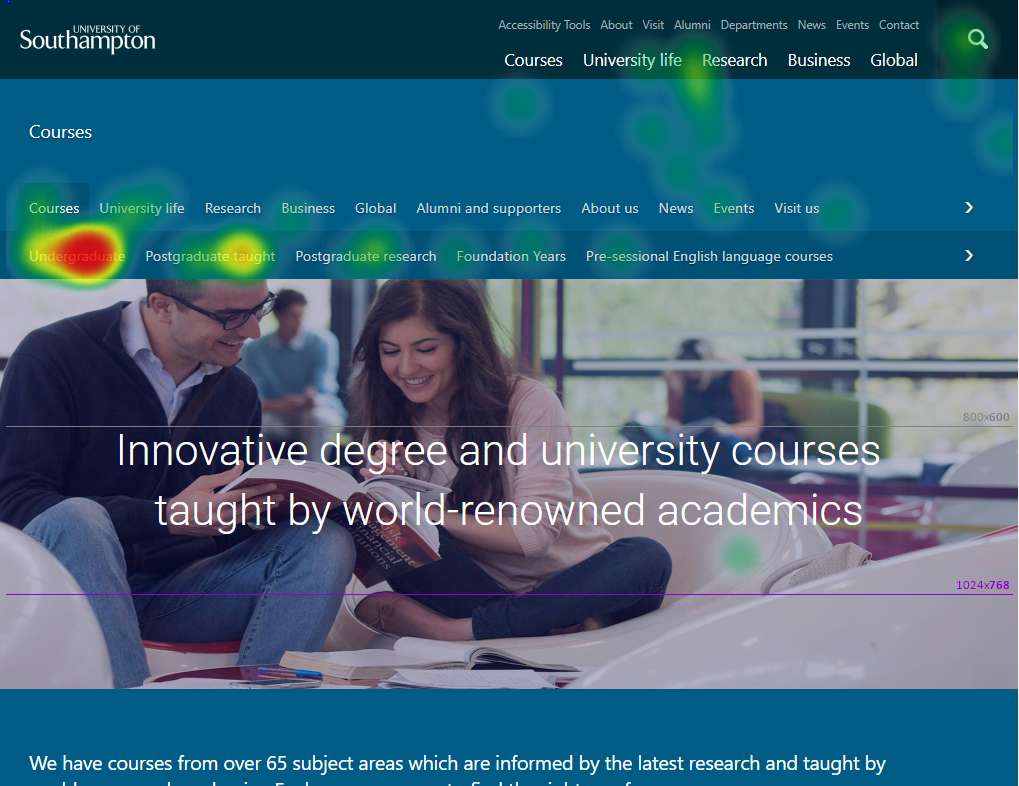What we’ve done, what we’ve learned this week, what we’re doing next
In my previous post, we concentrated on our project’s ambition and understanding all the various stakeholders involved with the course pages through the fact-checkers workshops. In this post, I will be sharing more about the content creation work – it’s importance, how we approach it and what tools we use to test and support it.
What we did
Writing course page content
Understand the courses we’re selling
“Every product has a unique personality and it is your job to find it” – Joe Sugarman
We know that small things can make a big difference, and this is especially true in web content. The shortest of phrases and even single words, coupled with how they are designed and where they are or are not placed on a page, can affect a user’s experience.
We’ve been working on some of our course content, starting with BSc Oceanography with Physical Geography.
Writing online is fundamentally about guiding users to achieve their goals, helping them to solve their problems, motivating the right behaviours.
Its success lies in the micro-moments.
So, we’ve been experimenting more with our writing. We start with the course page description: highlight the benefits and help our users accomplish something they want to accomplish. For example, increase 25% of all users to find module information after researching the course.
Understanding our users
- Who are they?
- Would they like to buy our product?
- Are they finding what they need on the course page?
- What do they love about it?
- What are their pain points? ..and so on
This is where the excellent personas Institutional Research (IR) have developed come in very handy. They’re truly outstanding and we constantly refer back to them. It’s also where we carry out additional user research to validate what we wrote and to ensure our users truly accomplish their goals online.
User research tests
This week we’ve completed the build of all our remote user research. Special thanks go to the UK Outreach Recruitment team, especially Paul and Gail, who have been extremely helpful by putting us in touch with their contacts in colleges and independent schools. The plan is to run the tests with both domestic and international users in key strategic locations.
Why remote research?
When you’re working with an agile project, remote research allows you to fit many user sessions into a single day and iterate quickly. It can be an extremely valuable addition to other research methodology. Apart from speed, it also allows us to access a large amount of the right participants in diverse geographical locations. The testing is designed for desktop and mobile devices.

An example from user testing.
Build and design
The new content will be used in new flat HTML templates which will then be used in the remote testing.
What we learned
Completing all our sprint’s tasks sometimes take longer than you think. The user testing threw a few curve balls our way, but we’re hopeful that we can work around them all in time. We had to adapt our plans accordingly to ensure we save ourselves some time elsewhere and not impact our project significantly.
It is also becoming apparent that course pages are too important to leave to chance. Each one should get the attention it needs. With a proper workflow and clear understanding of the aims, we think this can be done efficiently as part of OneWeb.
What we’re working on next
A number of key important activities will be worked on next:
- Completion of user testing and start on the analysis of the work
- Ensuring SEO is integral to the content creation and is truly baked in – this is where all the keywords analysis of our SEO team will be extremely useful and benchmarks against the competition
- Complete writing all the course sample pages
- Finish building all the templates in GatherContent and start on testing the workflow with the SPOCs and Fact-Checkers
A retrospective
Overall, this sprint for me was about articulating the needs of our users via our course content: making it easier for prospective students to find the information they need easily, and ultimately apply to undertake a degree at our university.
This sprint certainly felt quite fast, with little time to stop and think, though personally I think it’s important to time-box these activities so you don’t get stuck overthinking things.This is only the start of our process and we now have seven more weeks to develop these ideas and prototypes for this phase.
We want to prove that when we remove those barriers around mindset, culture and collaboration, we can create new and improved course pages, fit for the 21st century. Watch this space.
Lots done, lots still to do. That’s all for now. Thank you for reading.